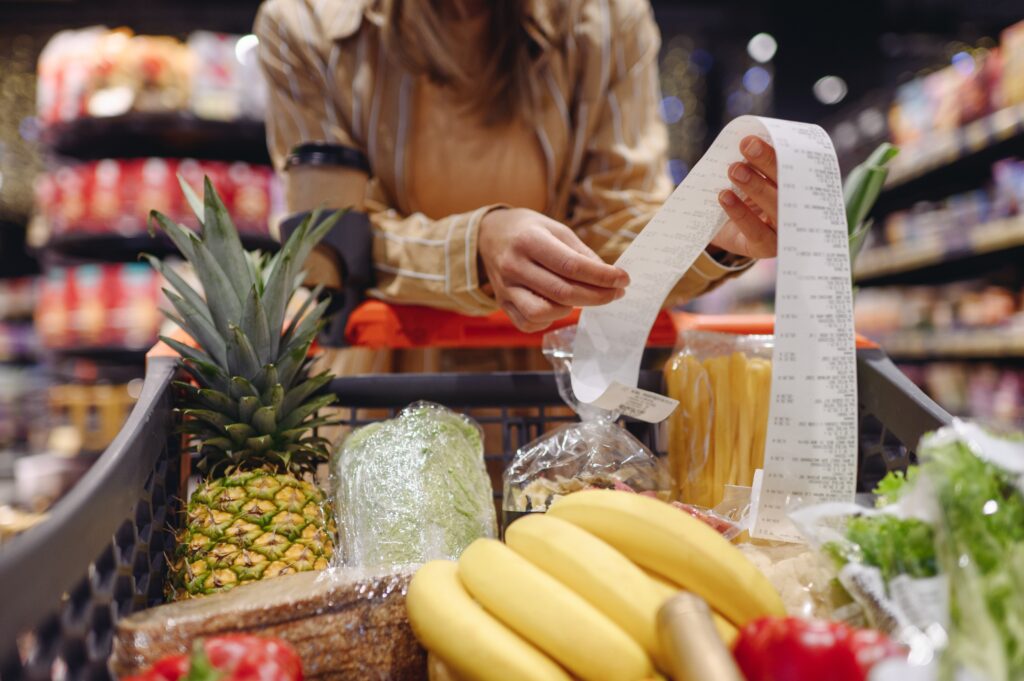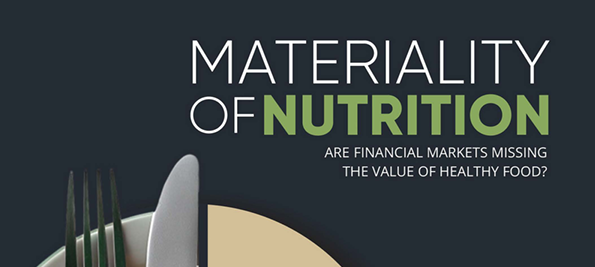
Who Values Nutrition?
6 February 2025Affordability has long been an effective merchandising strategy. The discount supermarket banner, No Frills, is a subsidiary of Loblaws, Canada’s leading grocery corporation by market share. On its origin in 1978, No Frills explains on its website that, “At a time when consumers were feeling the pinch of high inflation, many were only too happy to give up the frills to save money at the checkout counter.”
Today’s supermarket offers a well-appointed, custom experience. Freshness and reliability, incredible variety, items precision-tailored to our texture and flavour desires. Sushi made-to-order, ready meals, a smoothie bar. Perhaps these ‘frills’ matter to consumers; discounts count on the times when they will not, against the almighty dollar.
Food retailers often emphasize that theirs is a low-margin industry sector. But low-margin is not what characterizes food selling. Rather, it is that in food, betting on volume with selective value-for-money benefits to the consumer is a logical and conservative growth strategy. Amid serial economic downturns that have ruined other industries, revenue growth for grocers particularly discount banners has never flagged. Major discounter ‘channels’ now outperform most parts of the retail grocery industry in the United Kingdom and Europe.
Popular American company Costco, low-margins pioneer of the membership wholesale warehouse grocery experience, has quietly become the third largest retailer globally after Amazon and Walmart.
Certainly, selling food offers only a narrow range of potential margins. Food is an essential need. Retailing from the diverse global food supply means putting up a value offering across local consumers’ wide–ranging reasons for making their food choices, including differentiation in how consumers allocate their costs to their diets. And there is social and socioeconomic differentiation in price sensitivity, not to mention price ceilings—or, the potential for value growth.
In this kind of sector, where does nutrition fit?
ATNi’s recent report on the materiality of nutrition, based on an analysis of 20 diverse food and beverage manufacturers, found that:
On average, companies with broader, healthier food portfolios have higher EBIT margins (15.2%) than their peers (13.4%), but the opposite is true for companies with narrower food portfolios (16.7% for companies with less healthy portfolios and 10.4% for those with healthy portfolios).5 However, this result is influenced by two companies (Coca Cola and Keurig Dr Pepper) that have very strong brands and generate significant revenues (and profits) from selling soft drinks while controlling costs by outsourcing a portion of their bottling operations.

ATNi’s report suggests that nutrition has potential to drive value growth. Unfortunately for public health, it is also far too easy to make the business decision to leave nutrition behind, when targeting near-term food affordability. The COVID-19 pandemic, and the 2008 financial crisis before it, have shifted what average consumers are willing and able to allocate budget toward. Amid intense consumer focus on cost, relying on volume where most are willing to pay, is a tactic to protect growth. A shrewd large retailer has their own-brand lines. Other retailers, with higher operating costs and a narrow assortment, might choose to double down on the nutritional bottom (cheap, energy dense, nutrient poor) to preserve the bottom line.
After all, the majority of the population do not meet science-based recommendations for a nutritious diet. There is high scientific agreement and strong consistency among dietary guidelines about priority features of a nutritious diet (despite some protest to the contrary). Yet the magnitude of the gap between currently consumed and nutritionally optimal diets remains vast. Globally, intakes for sugar-sweetened beverages and sodium greatly exceed optimal levels; inadequate whole grains, fruits, and other nutritious foods lag far behind.
Evidence shows consumers are willing to pay for nutritious foods. Consumers are also willing to pay for what they value including time, specific brands, or for celebrations. It is right and practical to make everyday judgments about quality and quantity of one’s food choices, to get more value out of a food dollar.
The more severe a household’s income constraints, the greater the trade-offs to manage financial and food resources. The costs of nutritious foods are not equally distributed within or across countries. Many households are still managing their outlays to get the most nutrition they can. Researchers have found that a wide range of diet quality can be achieved at different levels of spending. Evidence from linear programming and other modelling studies shows model theoretical diets from food supply that can be sourced at low-cost, and that optimize nutrition, alongside parameters such as palatability, or ecological sustainability.
But the modern cost-conscious shopper is the purchasing department for a complex household enterprise. Most of us do not buy groceries with an ideal total diet as the priority outcome. No-frills affordability merchandising emphasizes all the non-nutrition value the shopper gets, and that message is targeted reliably but differently towards varied consumer segments. Selection? You didn’t want it anyway: here are the two leading national brands at the lowest cost in your geographic region. Fixed cash? Obtain rewards and gain predictable savings, in return for your loyalty to a retailer’s own-brand. Cost-per-use too high? Simply go larger. Get the reassurance of bulk, where today’s price is locked in for future use. Cost-per-item too high? Go smaller. Obtain your preferred product now, in a reduced package size ideal for your budget. Need goods, without the professional services? Get eyeglasses and hearing aids alongside your next month’s rice.

Study after study has demonstrated that nutritious diets tend to cost more, and energy-dense, nutrient poor diets tend to cost less. Tufts researchers recently estimated that the retail cost of the most affordable nutrient-adequate diet globally was more than double that of the cost of adequate energy. One Harvard University review and meta-analysis from 2013 found that the average cost of a healthy diet was about $1.50 USD per day more than the less healthy alternative. But the cost difference between more and less healthy dietary patterns overall also ranged widely, from $0.07 to 3.02 USD per day, and price differentials between more and less nutritious options varied widely by food group. In Canada, adherence to national dietary guidance has been found to elevate daily diet cost, consistent across sex, age, and other sociodemographic groups.
Food prices are rising, in part due to routine inflation, but largely related to the ‘new normal’ of macro volatility: climate change, globalization of food markets and their financialization, high-stakes geopolitical manoeuvring. When food affordability is used by retailers as a merchandising feature of today’s nutrition environment, they are relegating the cost of food to a bargaining chip against their customers, in a situation where too many other calculations and compromises are already baked in. Incomes are too low and stagnant, social protections for vulnerable households rolled back, and the climb for social and income mobility precipitously steep.
Everyone loves a discount? An alternative interpretation is that no one in the current economic environment would turn down the chance to receive an equal, or greater value from a desired or needed item, at a lower cost outlay.
In the social sciences, a ‘stylized fact’ is a term of art that refers to an empirical regularity, all else being equal, that serves as a synthesis of what is known; it is sometimes construed as reality. Nutrition is currently one of the higher cost, nice-to-have items across society. ‘Nutrition costs more’ and ‘health will cost us more’ are today’s stylized facts, no more and no less. They don’t have to continue to be.
We have two problems to address through research and policy: why; and what’s next.
Food business as usual? Not good enough.
Later this year, ATNi will be publishing its 2025 Retail Assessment, which will include an assessment of the policies and practices of leading retailers around the world to increase access to affordable, nutritious foods. This assessment will also include an analysis of the healthiness of own-brand products sold by these retailers. Looking ahead to 2026, ATNi aims to conduct a second Materiality of Nutrition report that expands the companies and retailers assessed.

